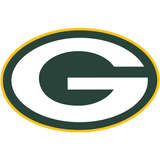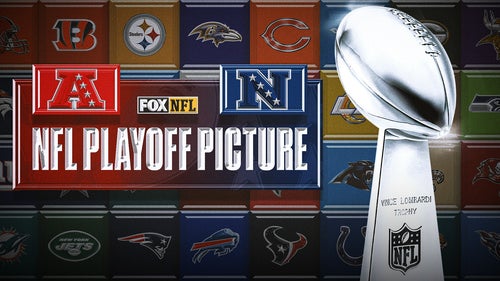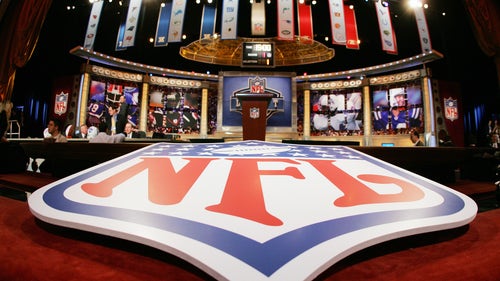
2017 NFL Draft: Lasting Impressions
If he had to assume the starting job tomorrow, no quarterback in the NFL would be less equipped to run his team’s offense than Patrick Mahomes in Kansas City. He’s going to be a multi-year project, which is why Andy Reid is saying that nothing changes for Alex Smith. (Although what else would you expect Reid to say?) Mahomes was basically a freelancing QB at Texas Tech, breaking plays down to enact what people like to call his “gunslinger” style. To play that way in an Air-Raid offense like Texas Tech’s takes an extraordinary lack of discipline. Reid’s West Coast offense is one of the NFL’s best designed, and it’s predicated almost entirely on responsible quarterbacking. Mahomes is talented but will have to overhaul his game.
The Raiders went defense on five of their first six picks. That tells their story on both sides of the ball. First-round cornerback Gareon Conley was the most interesting move. His his off-field situation aside—rape allegations, which he denies—he is very similar to incumbent right corner Sean Smith. What the Raiders most needed was a pure slot corner, and they still don’t have one. They also needed a linebacker, and they don’t have that either. As it stands, Ben Heeney and Cory James are the likely starters there. Heeney is quick but undisciplined. James is just a running-down defender. Jack Del Rio is hoping that his supremely talented D-line can make life easy on his limited linebackers.
PETER KING: The Raiders Gamble on Gareon Conley
Never mind that he’s the most recognizable college player from this draft and is expected by some to be football’s next Michael Jordan. There’s plenty of pressure on Watson to just keep Houston’s offense afloat so that its defense can carry the team through the AFC. If Watson is the starter early this season, and he likely will be, coach Bill O’Brien will have to adjust his offense in two ways. One will be to scale back some of the full-field reads and option routes, which O’Brien did last year when Brock Osweiler was staring into headlights. The other will be incorporating moving pockets so that Watson can use his legs. Ultimately Watson will have to become a refined dropback passer. But to succeed during the early stages of his development, he must be allowed to play on the move.
No team over the last three years has done a better job than the Falcons when it comes to drafting defenders who fit their scheme. In Dan Quinn’s system, the front four must be quick and athletic. The linebackers must be fast. The secondary must be physical. Since 2015, Atlanta’s front four has been infused with first-round edge rushers Vic Beasley and now Takkarist McKinley (the guy who went bonkers on stage yelling about his grandmother). Their linebacking corps last year got speedsters Deion Jones (second round) and D.J. Campbell (fourth). This year they added Duke Riley (third round). They could afford to cushion their linebacker position because, thanks to the late-season emergence of 2015 second-rounder Jalen Collins, the depth at cornerback is excellent. And the safety position is stable because 2016 first-rounder Keanu Neal can cover tight ends. More important than finding these players is developing them. That’s what Quinn has done so well. This defense’s improvement was the reason Atlanta reached the Super Bowl last season.
ALBERT BREER: Everything Falls Into Place for Tampa
If Mitchell Trubisky pans out, no one will remember what the Bears traded in order to get him. For right now, he’s the black sheep of Chi-Town. The backlash is obscuring the realization that Trubisky wasn’t the only somewhat head-scratching pick for Chicago. In the second round, GM Ryan Pace took tight end Adam Shaheen, even though Zach Miller (albeit 32-year-old Zach Miller) can still play and ex-Dolphin Dion Sims was just signed for $10 million guaranteed (a price that brought about double-takes from those who watched him on film last year). In the fourth round, Pace tapped running back Tarik Cohen, despite already having quality young backups Jeremy Langford and Ka’Deem Carey. The Trubisky Rule applies to these guys, too: If Shaheen and Cohen pan out, we won’t remember who else was on the roster when they were picked. But at this point, it’s a little curious the Bears overlapped at so many positions given their needs at wide receiver and linebacker.
With first-round tight end Evan Engram (Ole Miss) aboard, the Giants now have a weapon down the immediate middle of the field. This will do wonders for their simple, straightforward passing game—especially when you factor in what new receiver Brandon Marshall can do inside. Defending Odell Beckham just got more complicated.
ANDREW BRANDT: Have We Seen The NFL’s Last Restricted Free Agent?
The Patriots didn’t pick until the third round, but they made it interesting. Twice. At No. 83 overall they took Derek Rivers, who perfectly answers their most glaring need: edge rusher. Two picks later, at 85, they went with Troy offensive tackle Antonio Garcia. Given that right tackle Marcus Cannon just got a new five-year deal, Garcia’s arrival suggests that 29-year-old Nate Solder might not be retained when his contract expires after this season. In today’s NFL, where many pass plays have the ball out so quickly (especially in New England’s scheme), left tackle has become an overpriced position. It wouldn’t be surprising if the Patriots let someone else spend big on the up-and-down Solder.
The Packers learned the hard way last season how important cornerback depth can be. In the playoffs, slow and stiff undrafted 2015 prospect Ladarius Gunter had to shadow No. 1 receivers Odell Beckham, Dez Bryant and Julio Jones. Gunter required significant safety help, which prevented defensive coordinator Dom Capers from installing the interior pressure concepts that he loves. Capers was probably long past feeling bereft here because, thanks to the struggles of 2015 high-drafted corners Damarious Randall and Quinten Rollins, he’d abandoned his blitz packages much earlier in the year. But make no mistake: the Packers are a pressure-based D. Which is why the draft’s television audience saw Capers walking into the Packers war room with a huge grin when GM Ted Thompson took Washington cornerback Kevin King in the second round. Capers came back 28 picks later with the same grin after the selection of safety Josh Jones. Jones’s arrival helps offset the departure of free agent Micha Hyde. (Or, on the cloudier side, it forecasts the eventual departure of 2018 free agent Morgan Burnett.) Today’s NFL demands quality pass defenders, especially if you’re going to scheme pressure. Thompson humbly acknowledged this by using his first two picks of 2017 on players who make up for his (so far) disappointing first two picks from 2015.
ROBERT KLEMKO: Dalvin Cook and the Stories Behind the Red Flags
The Browns should be commended. After so many rumors about what would happen with the No. 1 overall pick, they did the responsible thing and took acclaimed edge rusher Myles Garrett. That brings change most swiftly to a defense that needed it badly. The Browns did the responsible thing again with their next pick, taking safety Jabrill Peppers 25th overall. He should solve the missed-tackles problem in the secondary. Then the Browns, using their copious draft capital, traded back into the first round and nabbed an admired tight end, 20-year-old David Njoku from Miami. When their next pick came up, No. 20 in the second round, that’s when they jumped on a quarterback, ending DeShone Kizer’s minor fall. Like every other QB in this draft, Kizer comes with serious questions. But the Browns didn’t gamble a first-round pick on answering them. We won’t know for several years whether any of these new rookies can play. But from where things stand now, this was a very professional draft by the Browns.
It’d be a shock if Seahawks second-round pick Ethan Pocic doesn’t wind up starting at right tackle. There’s nowhere inside for the 310-pound LSU center to play. Justin Britt, who has moved around the O-line like a military brat, acclimating to a new position almost every year since 2014, has progressed too nicely at center to relocate. At guard, 2015 fourth-rounder Mark Glowinski made strides late last season and Germain Ifedi, a 2016 first-rounder, isn’t going anywhere. If Pocic plays right tackle, that leaves Luke Joeckel and George Fant to battle for left tackle. That’d be interesting. Fant, the converted basketball player was raw and probably unready for starting action last year. That said, he at least has upside. Joeckel, on the other hand, was a bust in Jacksonville at both tackle and guard. But he’s the one Seattle paid $8 million this offseason.
Several teams in this draft stockpiled defensive players over the first three or four rounds: Oakland, Seattle, Dallas, Miami, Washington and Baltimore. These teams have two things in common: They’ve all been to the playoffs in the past two years and have legitimate aspirations for that in 2017, and more importantly, they all run fairly rudimentary zone-based schemes. When you play simple zone, you bank on outexecuting rather than outsmarting your opponent. It makes sense these teams would prioritize defensive talent early in the draft.
The Colts’ defense needed overhauling. That can’t be fully accomplished in one draft, but Indy’s plan of action became clear: they’ll rebuild from back to front. New GM Chris Ballard used his first-round pick on rangy Ohio State safety Malik Hooker. Chuck Pagano, who coached on a Ravens team that had Ed Reed, knows how assuring a dangerous centerfielder can be to a defensive schemer. In the second round, Ballard nabbed Florida cover corner Quincy Wilson, who will pair with Vontae Davis. This suggests the Colts will play more man coverage in 2017. Which suggests they’ll rely heavily on blitzing. Given that Ballard was unable to acquire a pass rusher (unless you see third-round pick Tarell Basham from Ohio as that guy), heavy blitzing will be required if the Colts are to pressure the quarterback.
Question? Comment? Story idea? Let us know at talkback@themmqb.com










